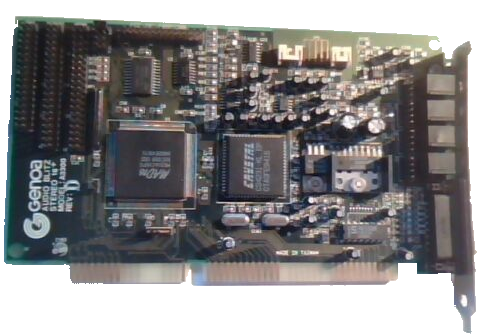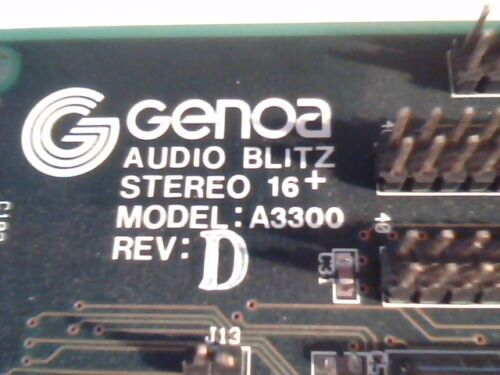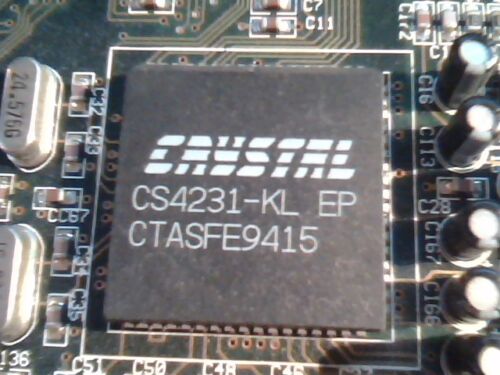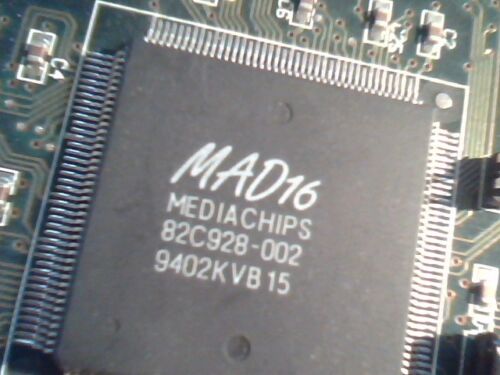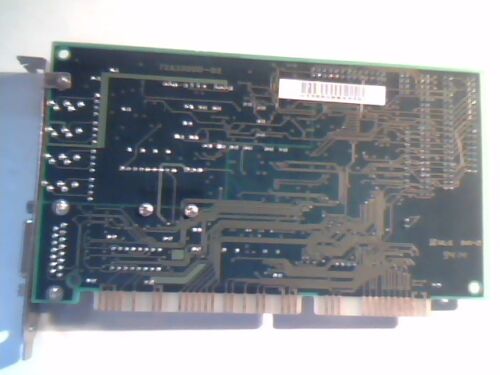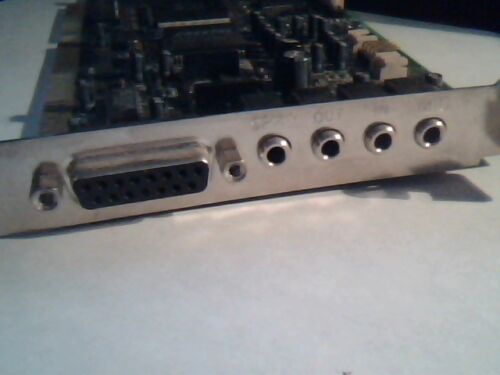 Genoa Systems
Genoa Systems
Genoa Systems was founded in 1984, in San Jose, CA. The company started out in the tape backup market with their Galaxy range, as well as producing 20 MB and 30 MB hard disks for the early PC/XT market. Most will remember them for their enhanced graphics cards on the ISA bus, though they continued to create cards based on other chipsets from Trident, S3 and Rendition until around 1998.
Their graphics cards were popular up to the VESA Super VGA era, but lost traction as the market moved into 3D.
In anticipation of a fast-growing mass-market for Internet services, starting in 1998, the company sought to transform itself from a hardware manufacturer into a provider of consumer software services. However, the hoped-for success did not materialize and the company went bankrupt.
Their "Super EGA" cards were very popular due to the fact they could display higher resolutions than the 640 x 350 standard, and as such their cards had more than the requisite 64 KB of memory. A lot of OEMs adopted Genoa cards for their PC compatibles. Genoa was one of the eight founding members of VESA (the Video Electronics Standards Association), responsible for standardising the Super VGA resolution. It was also the first to introduce "Flicker Free" technology at 72 hz refresh rate.
They also made an audio card called "AudioBlitz", and one called "AudioBahn", in 1993.
Graphics Card and Sound Card Product Lines (click the link to jump down to the cards that used these):
Video Cards
|
||||||||||||||||||||||||||||||||||||||||||||||||||||||||||||||||||||||||
|
||||||||||||||||||||||||||||||||||||||||||||||||||||||||||||||||||||||||
|
||||||||||||||||||||||||||||||||||||||||||||||||||||||||||||||||||||||||
|
||||||||||||||||||||||||||||||||||||||||||||||||||||||||||||||||||||||||
|
||||||||||||||||||||||||||||||||||||||||||||||||||||||||||||||||||||||||
|
| Description | |
|---|---|
| JMP2 | 1-2 and 4-5 = 128 KB memory, 2-3 and 5-6 = 256 KB memory |
| JMP4 | Open = NMI Enabled, Closed = NMI Disabled |
| JMP5 | 1-2 = Multifrequency or EGA display, 2-3 = IBM 5153 color display |
Click here to download the EGA BIOS ROM Dump.
More Images
The images above, in addition to the ROM BIOS dump, are courtesy of Andrew Wellburn, of Andys Arcade.
 Super VGA (Model 5100)
Super VGA (Model 5100)
![]()
![]()
Launched: 1988
Bus: ISA 8-bit
Chipset: Tseng Labs ET3000AF
Supports MDA, Hercules, CGA, EGA, VGA, MCGA and Super VGA.
Memory: 256 KB
Part #: 5200-10
Price: $449 (list price May 1988), $429 (list price Jan 1989), $239 (Jan 1989)
The highest resolution of the Super VGA card is 1056 x 480.
Because this card fully supports not only VGA but also its predecessors, the card has both a 15-pin DSUB (for VGA and MCGA analogue output) as well as a 9-pin DSUB (for the digital signal output of MDA, Hercules, CGA and EGA).
I tested the Genoa SuperVGA in a 10-MHz AST Premium 286 AT clone equipped with a Magnavox Professional VGA monitor and a Microsoft Mouse. The well-constructed Super-VGA installs snugly in a spare slot of any PC compatible or PS/2 model 25 or 30. To get the card up and running, you must set four DIP switches on the back of the card to match the type of display you plan to use. For analog VGA displays, like that of the Magnavox, all the switches must be set to Off. (To get all the benefits of VGA, you'll have to in- vest in a VGA-compatible color monitor; retail price starts at $500.)
Normally, there are no jumpers to set on the card, although you will have to set one if you plan to use any game or communications software that uses IRQ 2 (interrupt 2). The board will co-reside with a monochrome or CGA card, but not with another EGA or VGA card.
The SuperVGA is plug-compatible with nearly all TTL, multifrequency, and analog monitors. It sports two plugs, one standard IBM 9-pin DB for TTL displays, and one mini 15-pin DB for VGA and some multifrequency analog displays. You can drive a TTL and an analog display at the same time from the SuperVGA.
After you've inserted the card, you must install a VGA software driver for your particular applications. Genoa supplies drivers for several programs; the brief, clearly written manual gives instructions on how to install each. Because many other programs come with their own VGA drivers, most recently updated software will run in VGA mode.
Graphics programs really come into their own with VGA. The 640 X 480 pixel mode with 16 colors onscreen is particularly impressive — after you've tried it, you'll never want to go back to EGA, much less to CGA or monochrome. You'll find smooth, sharp curves and text, plus complete freedom from the old EGA 64-color strait jacket.
I ran two VGA paint programs. Deluxe Paint // and Splash!, with no compatibility problems. Switching between screen modes was smooth and trouble-free, A utility program supplied with the card allows you to test all the possible screen modes, including a vari- ety of 80-, 90-, and 132-column text modes for spreadsheets and other text- based programs. Before you buy any VGA adapter, of course, test it with the software you plan to use.
The acid test of any third-party graphics adapter is hardware compatibility. Genoa claims complete down ward compatibility for its board, and I found this to be true in my tests. SuperVGA provided a steady signal for all the more popular monochrome, CGA, MCGA, EGA, and VGA modes. Support for CGA, MDA, and Hercules modes is at the BIOS level; EGA- and VGA-mode support occurs at the register level. Register-level support means faster performance, coupled with the possibility of some software incompatibility. Hardware zooming, scrolling, and panning are provided for those few applications, such as AutoCAD, that can take advantage of them.
Don't assume that all of the Super-VGA's scores of display modes will work with your monitor. The interlaced, 256-color, and very-high-resolution 16-color modes sent my Magnavox monitor into display spasms. Genoa says the SuperVGA supports IBM's Video Feature Connector, an anticipated plug standard for display peripherals.
Solid construction, excellent downward compatibility, and planned future compatibility make the Genoa Super-VGA a good choice among VGA boards. It may not be inexfiensive, but it's certainly versatile. — Steven Anzovin"
Compute!, January 1989
.png) Super VGA HiRes (Model 5200-10)
Super VGA HiRes (Model 5200-10)
![]()
![]()
![]()
Launched: 1988
Bus: ISA 16-bit
Chipset: Tseng Labs ET3000AF
Supports MDA, Hercules, CGA, EGA, VGA, MCGA and Super VGA
Memory: 256 KB
Part #: 5200-10
Price: $645 (list price May 1988), $359 (Jan 1989)
This card supports resolutions of 1024 x 768 and 800 x 600 in 16 colours, or 640 x 480 and 512 x 512 in 256 colours. It supports both analog and TTL (digital) monitors.
For text modes, it also supports 80 columns x 66 rows for word processing, or up to 132 columns x 66 rows for spreadsheets and databases.
Image above credited to Daniel Owen - thanks Daniel!
.png) SuperVGA (Model 5300/5400 IN)
SuperVGA (Model 5300/5400 IN)
![]()
![]()
![]()
Launched: February 1989
Bus: ISA 16-bit
Chipset: Tseng Labs ET3000AF
Supports MDA, Hercules, CGA, EGA, VGA, MCGA and Super VGA.
Memory: 256 KB (Model 5300) or 512 KB (Model 5400)
Part #: 5300-10, 5400-10
Price at Launch: $499 (list, 5300), $699 (list, 5400)
The 5300 and 5400 VGA adapters include a 16-bit bus and RAM BIOS and offer a resolution of 1,024 by 768 pixels in 16 colors, according to Genoa. The 5300 includes 256K of display RAM, while the 5400 has an additional 256K of memory, bringing its display RAM total to 512K.
The Model 5400 is targeted for desktop publishing and presentation as well as other graphics-intensive applications, according to Genoa. It offers a range of resolution and color combinations, including 1,024 by 768 pixels in 16 colors, 800 by 600 in 256 colors, and 640 by 480 in 256 colors.
Both models include setup and diagnostic software as well as device drivers for applications such as AutoCAD, Ventura Publisher, Lotus 1-2-3, and Windows, according to the company. Both boards support digital or analog monitors and will automatically detect and configure for 8-bit PC XT bus or 16-bit PC AT bus operation using an on-board auto-sensing capability, the company said.
Both the Model 5300 and the Model 5400 are scheduled to begin shipping next month in limited quantities, the company said. The 5300 will list for $499 and the 5400 will be $699.
InfoWorld, February 1989
 SuperVGA HiRes (Model 5700)
SuperVGA HiRes (Model 5700)
![]()
![]()
![]()
Launched: 1988
Bus: ISA 16-bit
Chipset: ?
Supports MDA, Hercules, CGA, EGA, VGA, MCGA and Super VGA.
Memory: 512 KB
Part #: 5700-10
FCC ID: ?
Price: ?
.png) SuperVGA (Model 6200)
SuperVGA (Model 6200)
![]()
![]()
![]()
Launched: 1989?
Bus: ISA 16-bit
Chipset: (Proprietary Genoa "GVGA")
Supports MDA, Hercules, CGA, EGA, VGA, MCGA and Super VGA.
Memory: 512 KB
Part #: 6200-10
FCC ID: ?
Price: ?
.png) SuperVGA (Model 6400)
SuperVGA (Model 6400)
![]()
![]()
![]()
Launched: 1991
Bus: ISA 16-bit
Chipset: (Proprietary Genoa "GVGA")
Supports MDA, Hercules, CGA, EGA, VGA, MCGA and Super VGA.
Memory: 512 KB
Part #: 6400-10
FCC ID: F886450, F726450
Price: $248 (Aug '91)
CONS: No 1MB version, one-year warranty
The Genoa SuperVGA 6400A goes for a moderate $248 on the street and offers flicker-free 70-Hz screen refresh all the way up to 1024 by 768. With a RAM limit of 512K, however, you can enjoy that resolution with only 16 colors.
A growing number of Windows applications use 256 colors, allowing you to preview color slides and run monitor-based presentations. You can get 256 colors from this board - but only if you never go beyond 800 by 600. As for performance, the board fell well below the mean in both the AutoCAD and PowerPoint tests.
At 70 Hz, the SuperVGA 6400A displays two screens fewer per second than 72-Hz boards. But unless you have oscilloscopes for eyes, you won't notice the difference.
Genoa's warranty expires after one year, and the SuperVGA 6400A's speed won't thrill you. Flicker-free performance across all modes is this board's main selling point. If you want a flickerless 1024 by 768 image from a 16-inch monitor such as NEC's MultiSync 4D, this board and the ATI VGA Wonder XL are your only choices."
PC World, August 1991
A Model 6600 was also released - this was the same as the 6400 but had a Micro-Channel Architecture (MCA) interface. A 6600A variant supported 70 Hz refresh rate.
.png) Multimedia VGA (Model 7900)
Multimedia VGA (Model 7900)
![]()
![]()
![]()
![]()
Launched: ?
Bus: ISA 16-bit
Chipset:
Tseng Labs ET4000AX
Memory: 1 MB
Price: ?
This card used the Tseng Labs ET4000AX chipset with 1 MB RAM. It supported a range of RAMDACs including normal (256 colours), HiColor (32,000 colours) and a Special (16.7 million colours).
 Windows VGA
Windows VGA
![]()
![]()
![]()
![]()
![]()
Launched: Early 1992
Bus: 16-bit ISA
Chipset: S3 86C911
Memory: 1 MB VRAM
Price: $495 (Mar 1992)
FCC ID:
Available only in one memory configuration - with 1MB of 80-nanosecond VRAM - the WindowsVGA comes standard with a DAC at a retail price of $495 or, as with our evaluation unit, with the Sierra HiColor RAMDAC. Genoa reports early street prices of about $375 for the Sierra-equipped version.
The Genoa offering gives you the strain-saving 72-Hz vertical refresh rate at 640 by 480 with 256 colors and at all 800-by-600 resolutions. Genoa uses Version 1.5 of the S3-equipped BIOS, which does not fully implement VBE compatibility. Proprietary drivers allow users access to VESA-compliant refresh rates in both 800-by-600 and 1,024-by-768 modes.
Available display modes go all the way up to 1,280 by 1,024 with 16 colors (though not under Windows). Performance on our VGA tests hovered around the low-middle range, but in 16-color mode on our text-intensive applications Windows tests, the Genoa ran a fast second to the Diamond [Stealth VRAM] card.
In 256-color mode on all our Windows tests, its performance was also impressive. Driver support is extensive. Our evaluation unit came with S3-written drivers for AutoCAD, CADvance, Generic CADD, Lotus 1-2-3 2.x, Microsoft Windows 3.0, Microsoft Word 5.0, Microstation, and WordPerfect 5.1.
Unlike the Orchid offering [Fahrenheit 1280], the Genoa Windows-VGA currently offers no separate access via the Windows driver to 16 and 256-color modes at Super VGA and 1,024-by-768 resolution. To force the board to 16 colors, you'll have to execute the included 4PLANE utility manually or insert it in a batch file. Genoa runs a 24-hour BBS to make future drivers and update information available to users.
The Genoa offering also lacks the generous documentation and automatic driver installation routine of its slickest competition. Admittedly, Genoa has done a better job with only a 4-page manual than some vendors do with ten times as much information, and READ.ME files help fill in some of the gaps, but one tends to expect more for a list price of close to $500.
Particular strengths of the FCC Class B-certified WindowsVGA include its pass-through edge connector and the Sync utility that allows you to override the scan frequencies set by the board's DIP switches, which are mercifully location along the board's back bracket. Another plus of Genoa's card is its Safescan within Windows. If your monitor has an overscan feature, for instance, this will allow you to eliminate the black border of the screen in Windows by adjusting overscan to extend just past the screen's visible edges.
Genoa's video accelerator ran smoothly throughout testing and seems to be a solid S3-based offering. As with Orchid and other well-established vendors, you also buy with the assurance that free driver updates will be available via the company's 24-hour BBS. Though it comes at a premium when compared with some of the competition's prices, the Genoa WindowsVGA is worth a closer look." PC Magazine, March 1992
.png) Windows VGA 24 (Model 8500)
Windows VGA 24 (Model 8500)
Launched: 1991
Bus: 16-bit ISA or VESA Local Bus
Chipset: Cirrus Logic CL-GD5426
Memory: ?
Price: ?
FCC ID: FB88500 (ISA version), FB88500VL (VLB version)
This was the first graphics accelerator card designed specifically for Windows and AutoCAD.
Thanks to Charles Hudson for the VLB card image below!
Additional Images
 Windows VGA 24+
Windows VGA 24+
Launched: Early 1993
Bus: 16-bit ISA
Chipset: S3 86C801C
Memory: ?
Price: $249 (Apr 1993)
FCC ID:
 Windows VGA 64
Windows VGA 64
Launched: 1992?
Bus: ?
Memory: ?
Price: ?
 TurboBahn
TurboBahn
Launched: 1993
Bus: VESA Local Bus
Memory: ?
Price: ?
The TurboBahn was the first 24-bit true colour local bus graphics and motherboard solution combination.
 Phantom 32 / Phantom 32i
Phantom 32 / Phantom 32i
![]()
![]()
![]()
![]()
![]()
Launched: January 1994
Chipset: Tseng Labs ET4000/W32i
Bus: VESA Local Bus
Supports: SVGA
Memory: 1 MB or 2 MB DRAM
Price: ?
This product is designed to be used on 32-bit VESA local bus systems and conforms to all current video standards. Additionally, it uses memory interleaving technology to deliver the highest performance available in 2 MB DRAM-based accelerators.
The Phantom 32i is offered in two versions: the Model 8900VL-20 comes with 2 MB on-board; and the Model 8900VL-10 offers 1 MB DRAM and is upgradable. The extra 1 MB provides 65,000 colors at 1,024 x 768 and 256 colors at 1,280 x 1,024, as well as a 40 percent increase in performance.
An additional feature of the board is Genoa's proprietary FlickerFree technology, which eliminates screen flash and flicker providing a stable image display.
Phantom 32i Model 8900VL-20 costs $349 and the Model 8900VL-10 costs $269." HP Professional, January 1994
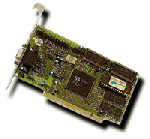 Phantom 64 V2001 (Model 8765)
Phantom 64 V2001 (Model 8765)
![]()
![]()
![]()
![]()
Launched: 1996
Chipset: S3 Trio64V+
Bus: PCI v2.1
Supports: MDA, CGA, EGA, VGA, and VESA.
Memory: 1 MB EDO DRAM (upgradable to 2 MB)
RAMDAC Clock: 135 MHz
Price: ?
Known Model Variants: Phantom 64 V2001- 1MB (Retail) Part # 128765-00, Phantom 64 V2001- 2MB (Retail) Part # 128766-00, Phantom 64 V2001- 1MB (Bulk) Part # 128765-50 and Phantom 64 V2001- 2MB (Bulk) Part # 128776-50
A 64-bit graphics and video accelerator card. It has an integrated 24-bit RAMDAC that runs at 135 MHz. The card offloads the following functions from the CPU: BITBLT, Rectangular Clipping, Line Draw, Color Expansion, Rectangle Fill, Pattern Fill, Raster Operations. 100% register/BIOS compatible with IBM VGA, VESA, EGA, CGA MDA, and supports VGA, Super VGA and multi-frequency monitors.
Genoa stated that "The Phantom 64 V2001 is a high performance 64-bit graphics and video accelerator with an optimum price-performance ratio. The latest in the successful Phantom 64 series, the V2001 offers great graphics acceleration as well as enhanced playback of digital video such as Cinepak©, Indeo© and AVI."
Graphic Accelerator Features- S3 Streams Processor(tm) for enhanced, scalable video playback up to 1024 x 768 with 64,000 colors (High Color)
- S3 Scenic Highway(tm) interface for connection to hardware MPEG-1 audio/video decoders and video digitizer boards
- Supports Indeo, Cinepak, and software accelerated MPEG-1 video playback
- Color space conversion YUV to RGB: scaling, dithering and linear interpolation of video input
- Color- and chroma-keying for graphics to video overlays
- Arithmetic blending of two pixel streams for better fade-in/fade-out transition effects
- Hardware double-buffering for "tear free" game effects and video
- Virtual Desktop - pan off screen
- Vertical and Horizontal Lock
- Change resolutions "on the fly" within Windows
- Virtual Screen utility: simulates 1600x1200 resolution
- 64-bit internal/external data path
- Integrated 24-bit RAMDAC with 135MHz output pixel rate
- Integrated dual clock synthesizer
- 1MB fast EDO (Extended Data Output) DRAM standard upgradeable to 2MB
- Acceleration for 8 / 16 / 24-bit pixels
- Graphics hardware cursor 64x64x2 or 32x32x2
- Offloads following functions from CPU: BITBLT, Rectangular Clipping, Line Draw, Color Expansion, Rectangle Fill, Pattern Fill, Raster Operations
- S3 Scenic Highway Interface
- Allows addition of hardware MPEG decoders such as S3 Scenic/MX2
- Supports daughter card or separate ISA card configuration
- Connects to Genlock or other multimedia cards
- Wider bandwidth now offers "pass through" video overlay at resolutions up to 1024x768
- Supports Microsoft Plug and Play for Windows 95
- Automatically configures Phantom 64 V2001 for optimum resolutions/refresh rates for compatible monitors
- Conforms to EPA Energy Star specifications
- Reduces power consumption for compatible monitors
- 100% register/BIOS compatible with IBM VGA, VESA, EGA, CGA MDA
- 100% compatible with PCI rev. 2.1
- Supports VGA, SuperVGA, multifrequency and analog monitors
- 2MB version also available
- Virtual Desktop - pan off screen
- Vertical and Horizontal Lock
- Change resolutions "on the fly" within Windows
- Virtual Screen utility: simulates 1600x1200 resolution
- Microsoft Windows, Windows NT 3.x, Windows 95, IBM OS/2
- AutoCAD, AutoShade, 3D Studio, Microstation and more
Display Modes:-
| 1MB DRAM | |||
|---|---|---|---|
| Resolution | 16/256 colors | 65,000 colors | 16.8 Million colors |
| 640x480 | up to105Hz | up to 105Hz | up to 105Hz |
| 800x600 | up to 90Hz | up to 90Hz | |
| 1024x768 | up to 90Hz |
| 2MB DRAM | |||
|---|---|---|---|
| Resolution | 16/256 colors | 65,000 colors | 16.8 Million colors |
| 640x480 | up to 105Hz | up to 105Hz | up to 105Hz |
| 800x600 | up to 90Hz | up to 90Hz | up to 90Hz |
| 1024x768 | up to 90Hz | up to 90Hz | |
| 1280x1024 | up to 90Hz |
The 1 MB version of this card supports resolutions up to 1024 x 768 in 256 colours from 43(i) up to 90 hz refresh rate, 800 x 600 in 65,000 colours at 56-90 hz, and 640 x 480 in 16.8 million colours at 60-105 hz.
With the 2MB card, 1280 x 1024 resolution is added in 256 colours at 43(i)-90 hz refresh rate, 1024 x 768 in 65,000 colours and 800 x 600 in 16.8 million colours.
 VideoBlitz II
VideoBlitz II
![]()
![]()
![]()
Launched: 1994
Chipset: Weitek P9100
Bus: PCI
Supports: MDA, CGA, EGA, VGA, and VESA
Memory: 2 MB VRAM
Price: $589 (Nov/Dec 1994)
FCC ID: -
Equipped with 2 MB of VRAM, the card is capable of running at a maximum resolution of 1,600 x 1,200 with up to 64K colors. It also has the ability to deliver True Color at 1,280 x 1,024 resolution." Microcomputer Journal, November/December 1994
 Phantom Pro Video / VideoBlitz III AV (Model 8968)
Phantom Pro Video / VideoBlitz III AV (Model 8968)
![]()
![]()
![]()
Launched: 1995
Chipset: S3 Vision968
Bus: PCI v2.1
Supports: MDA, CGA, EGA, VGA, and VESA.
Memory: 2 MB VRAM or 4 MB RAM
Price: $629 (street price, June 1995)
FCC ID: -
The VideoBlitz III AV (also known in Europe as the Phantom Pro Video) was a high performance 64-bit graphics and video accelerator designed for graphics users and multimedia presentation professionals. Using the acceleration as well as enhanced playback of digital video such as Cinepak©, Indeo© and AVI.
Graphics/Video Accelerator
S3©Vision968(tm)
- 64-bit internal/external data path
- RAMDAC with 185MHz output pixel rate
- Dual clock synthesizer
- Acceleration for 8 / 16 / 24-bit pixels
- Graphics hardware cursor 64x64x2 or 32x32x2
- Offloads following functions from CPU: BITBLT, Rectangular Clipping, Line Draw, Color Expansion, Rectangle Fill, Pattern Fill, Raster Operations
Video Playback Features
- Supports Indeo, Cinepak, and software accelerated MPEG-1 video playback
- Color space conversion YUV to RGB: scaling, dithering and linear interpolation of video input
Memory Configurations
- 64-bit memory-to-chip interface for faster data transfer and display
- 2MB fast VRAM (Video RAM) standard
- 4MB version available
Interfaces and Connectivity
VESA 16-bit Feature Connector (VFC)
- Connects to Genlock or other multimedia cards
- Wider bandwidth now offers "pass through" video overlay at resolutions up to 1024x768
VESA Display Power Management Signalling (DPMS)
- Conforms to EPA Energy Star specifications
- Reduces power consumption for compatible monitors
Compatibility
- 100% register/BIOS compatible with IBM VGA, VESA, EGA, CGA MDA
- 100% compatible with PCI rev. 2.1
- Supports VGA, SuperVGA, multifrequency and analog monitors
- 2MB version also available
ProPilot(tm) Software Utilities
- Virtual Desktop - pan off screen
- Vertical and Horizontal Lock
- Change resolutions "on the fly" within Windows
- Virtual Screen utility: simulates 1600x1200 resolution
Advanced Drivers
- Microsoft Windows, Windows NT 3.x, Windows 95, IBM OS/2
- AutoCAD, AutoShade, 3D Studio, Microstation and more
Display Modes
2 MB VRAM| Resolution | 16/256 colors | 65,000 colors | 16.8 Million colors |
|---|---|---|---|
| 640x480 | up to 106Hz | up to 91Hz | up to 91Hz |
| 800x600 | up to 90Hz | up to 90Hz | up to 90Hz |
| 1024x768 | up to 84Hz | up to 84Hz | |
| 1280x1024 | up to 76Hz | ||
| 1600x1200 | up to 72Hz |
| Resolution | 16/256 colors | 65,000 colors | 16.8 Million colors |
|---|---|---|---|
| 640x480 | up to 106Hz | up to 91Hz | up to 91Hz |
| 800x600 | up to 90Hz | up to 90Hz | up to 90Hz |
| 1024x768 | up to 84Hz | up to 84Hz | up to 84Hz |
| 1280x1024 | up to 76Hz | up to 75Hz | up 72Hz |
| 1600x1200 | up to 72Hz | up to 72Hz |
The VideoBlitz is designed around the S3 Vision968 integrated graphics controller/video scaler chip, IBM's 170-MHz RGB514 RAMDAC, and either 2MB or 4MB of VRAM. The 4MB card we tested delivered a maximum resolution of 1,600 by 1,200 pixels at 16-bit color with a 72-Hz vertical refresh rate and 1,280 by 1,024 pixels at 24-bit color with a 75-Hz refresh. These are midrange specs only; those spending long hours working on big-screen graphics may want to consider faster cards.
Unlike several other cards we tested, the VideoBlitz successfully completed every benchmark test - albeit with less-than-stellar scores. On the Graphics WinMark 95 tests, the VideoBlitz placed respectably in the midrange at 1,600-by-1,200 resolution with 16-bit colors, but it fell closer to the bottom of the pack at 1,200-by-1,024 resolution with 24-bit color. Along with the other Vision 968-based cards, the VideoBlitz was a middling performer. The VideoBlitz ranked fifth from the bottom on our Vector File Open test and second from the bottom on our Raster Rotate test. On both those tests, the VideoBlitz was the slowest S3 Vision968-based card. It also ranked near the bottom on both of our AutoCAD tests.
On the plus side, the VideoBlitz was totally unruffled by our driver stability tests, which are designed to bend, fold, spindle, and mutilate graphics drivers - and often do. Anyone who has ever lost a few hours of work due to an ill-timed General Protection Fault will treasure this stability.
Make no mistake: VideoBlitz, with its average refresh rates, middling benchmark-test performance, and lack of color controls, is not a card for graphics professionals. But it offers a refreshing combination of useful and accessible features, operational stability, and hardware performance that should prove very attractive to a broad swath of mainstream users."
PC Magazine, 27th June 1995
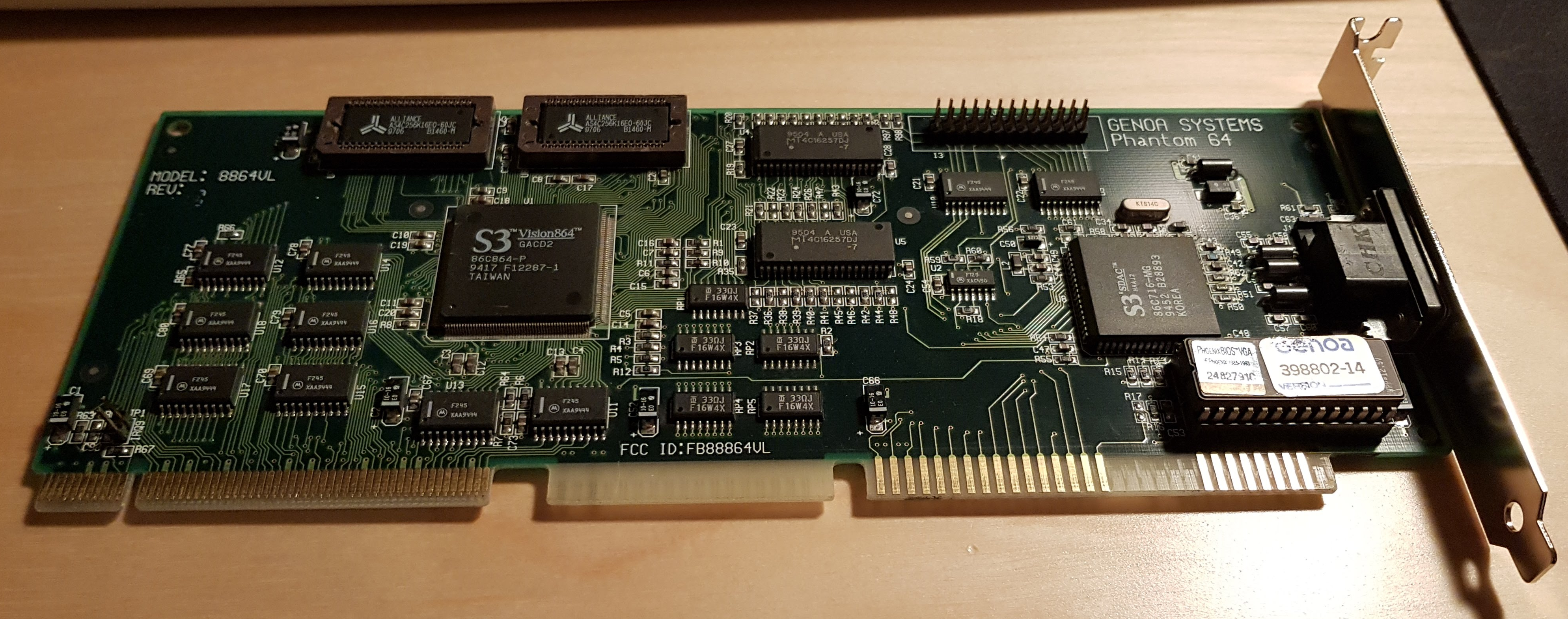 Phantom 64 2M VLB (Model 8864VL)
Phantom 64 2M VLB (Model 8864VL)
Launched: 1996 ?
Chipset: S3 Vision864 with Phoenix BIOS
Bus: VESA Local Bus
Supports: MDA, CGA, EGA, VGA, and VESA.
Memory: 2 MB
Price: ?
FCC ID: FB88864VL
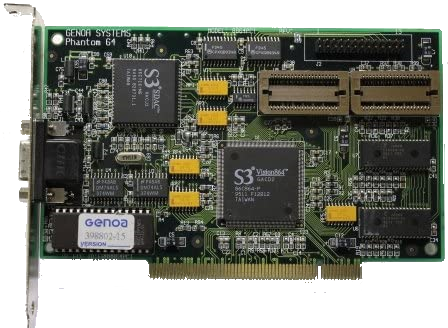 Phantom 64 (Model 8864PCI)
Phantom 64 (Model 8864PCI)
Launched: 1996 ?
Chipset: S3 Vision864 with Phoenix BIOS
Bus: PCI
Supports: MDA, CGA, EGA, VGA, and VESA
Memory: 2 MB
Price: ?
FCC ID: FB88864PCI
 Phantom 3D (Model 8325) and Phantom 3D/DX
Phantom 3D (Model 8325) and Phantom 3D/DX
![]()
![]()
![]()
![]()
Launched: 1996
Bus: PCI v2.1
Chipset: S3 ViRGE (Phantom 3D) or S3 ViRGE/DX (Phantom 3D/DX)
Memory: 2 MB DRAM (upgradable to 4 MB)
RAMDAC Clock: 135 MHz
(Phantom 3D) or 170 MHz (Phantom 3D/DX)
Price: ?
Known Model Variants:Phantom 3D/DX -2MB (Retail) Part # 128375-00, Phantom 3D/DX -4MB (Retail) Part # 128376-00, Phantom 3D/DX -2MB (Bulk) Part # 128375-50 and Phantom 3D/DX -4MB (Bulk) Part # 128376-50
The Phatom 3D comes with an integrated RAMDAC which runs at 135 MHz. It has these features: Graphics hardware cursor 64x64x2 or 32x32x2, High performance 2D Windows acceleration, Flat and Gouraud shading for 3D, High quality/performance 3D texture mapping, Perspective correction, Bi-Linear & tri-linear texture filtering, MIP-Mapping, Depth cueing, fogging, and alpha blending, Video Texture mapping, Z-buffering and MUX-buffering, Vertical interpolation for video playback.
Genoa stated that "The Phantom 3D delivers powerful 64-bit graphics and the ultimate in high performance. With the Phantom 3D's picture perfect image and unsurpassed speed, it is perfect for all high resolution applications. The Phantom 3D, a new level of high speed performance."
Graphics Accelerator Features- High performance 2D Windows acceleration
- Flat and Gouraud shading for 3D
- High quality/performance 3D texture mapping
- Perspective correction
- Bi-Linear & tri-linear texture filtering
- MIP-Mapping
- Depth cueing, fogging, and alpha blending
- Video Texture mapping
- Z-buffering and MUX-buffering
- Vertical interpolation for video playback
- S3 Streams Processor(tm) for enhanced, scalable video playback up to 1024 x 768 with 64,000 colors (High Color)
- S3 Scenic Highway(tm) interface for connection to hardware MPEG-1 audio/video decoders and video digitizer boards
- Allows different color depths for graphics and video
- Hi-quality hardware assisted video playback with horizontal interpolation
- Phantom 3D Accelerator card, Software Utilities, Installation Disks, User's Manual
- VESA, IBM VGA, EGA, CGA, and MDA compatible
- 100% compatible with PCI Rev. 2.1
- Supports VGA, Super VGA, multi frequency and analog monitors
- 16-bit VESA Advanced Feature Connector (VAFC) - Connects to Gen lock or other multimedia cards, Wider bandwidth offers "pass-through" video overlay at resolutions up to 1024x768
- VESA Display Data Channel (DDC) - Supports Microsoft Plug and Play for Windows 95, automatically configures Phantom 3D/DX for optimal resolution/refresh rates for compatible monitors
- Microsoft Windows 95, Microsoft NT 3.x, Microsoft Windows 3.11 and more.
Graphics Modes Supported (2 MB)
| Resolution | 16/256 colors | 65,000 colors | 16.8 Million colors |
|---|---|---|---|
| 640x480 | Up to 106Hz | Up to 106Hz | Up to 106Hz |
| 800x600 | Up to 90Hz | Up to 90Hz | Up to 85Hz |
| 1024x768 | Up to 85Hz | Up to 85Hz | |
| 1280x1024 | Up to 75Hz | ||
| 1600x1200 | Up to 50Hz* |
4 MB
| 1024x768 | Up to 85Hz |
|---|
A Phantom 3D/DX model was also released for $135 MSRP. It was almost identical to the Phantom 3D, but used the S3 ViRGE/DX chipset, and had its RAMDAC running at 170 MHz.
Specs for 3D/DX were as follows:
- S3D Graphics/Video engine S3 ViRGE DXÔ
- New 170 Mhz integrated RAMDAC for higher refresh rates
- Improved video input features and decimation
- Acceleration for 8/16/24-bit pixels
- High screen resolution (non-interlaced) support
- 2 MB DRAM video memory, upgredable to 4 MB 4MB also available
- VESA, IBM VGA, EGA, CGA, and MDA compatible
- 100% compatible with PCI Rev. 2.1
- Supports VGA, Super VGA, multi frequency and analog monitors
- Display Power management Signaling (DPMS)
- 16-bit VESA advanced Feature Connector (VAFC) - Connects to Gen lock or other multimedia cards, Wider bandwidth offers "pass-through" video overlay at resolutions up to 1024x768
- VESA Display Data Channel (DDC) - Supports Microsoft Plug and Play for Windows 95, automatically configures Phantom 3D/DX for optimal resolution/refresh rates for compatible monitors
| Resolution | 16/256 colors | 65,000 colors | 16.8 Million colors |
|---|---|---|---|
| 640x480 | Up to 106Hz | Up to 106Hz | Up to 106Hz |
| 800x600 | Up to 90Hz | Up to 90Hz | Up to 85Hz |
| 1024x768 | Up to 85Hz | Up to 85Hz | |
| 1280x1024 | Up to 75Hz | ||
| 1600x1200 | Up to 50Hz* |
3D/DX 4 MB
| 1024x768 | Up to 85Hz |
|---|
"Genoa Systems To Sneak Preview New Generation Of Graphics And Motherboard Technology For Consumer Multimedia Market
Taipei, Taiwan [June 02, 1997] -- Genoa Systems Corporation, a pioneer in delivering high performance multimedia technology to the consumer at breakthrough price points, will preview a new generation of graphics and motherboard product offerings at Computex '97, Booth # B830 and B832 of American Pavilion, June3~7, 1997.
3D GRAPHICS ACCELERATORS BRING HOME NEW PERFORMANCE LEVELS
At the show, Genoa Systems will demonstrate two new members of its Phantom line of graphics acceleartors including a new 3D offering boasting high-end features at a consumer price-point.
Genoa Systems' Phantom 3D/DX graphics accelerator is ideal for use with today's high-end 3D game as well as other home and business applications. Based on S3's new ViRGE DX chip technology, the Phantom 3D/DX provides true 3D performance including texture mapping, flat and Gourad shaping, depth cueing, fogging, alpha blending and other functional associations normally associated with high-cost 3D accelerators. In addition to providing a rich 3D computing experience, the Phantom 3D/DX also provides 2D graphics and enhanced video playback using both horizontal and vertical interpolation for a smoother, faster display of digital video images up to 30 frames per second. MSRP of Phantom 3D/DX with 4MB memory is $135, or $115 with 2MB memory.
The company will also demonstrate the Phantom 64/DX based on S3's Trio64 V2/DX graphics/video engine. The new S3 chip combined with an increased RAMDAC speed of 170MHz and DRAM support of up to 4MB deliver crisp images amd graphics performance ideal for the consumer market. The Phantom 64/DX also incorporates the latest S3 Streams Processor enhancements for even smoother playback of digital video standards including CinaPak, Indeo and AVI. MSRP of Phantom 64/DX with 4MB memory is $79."
Genoa Press Release, 2nd June 1997
More Images
 Stratos 3D
Stratos 3D
Launched: ?
 Phantom AGP Blitz / Phantom AGP Blitz Pro
Phantom AGP Blitz / Phantom AGP Blitz Pro
Launched: 1997
Bus: AGP 1x
Chipset: Trident 3DImage 975 (non-Pro) or 3DImage 985 (Blitz Pro)
Memory: ?
Price: ?
"Genoa Systems Partners With Trident To Launch First Shipping Accelerated Graphics Port Add-In Board
SAN JOSE, California [September 8, 1997] ----Genoa Systems Corporation today announced the introduction of its Phantom™ AGP Blitz and Phantom™ AGP Blitz Pro accelerator boards and the graphics industry's incorporation of Intel's AGP-1X (accelerated graphics port) standard in tandem with Trident Microsystems' chip architecture. Combining Trident's 3DImàge 975™ and 3DImàge 985™ chip sets respectively with Genoa's board design and proprietary driver and utility suites, the Phantom AGP Blitz and Phantom AGP Blitz Pro are the company's initial AGP solutions incorporating 2D/3D acceleration and optional DVD and videoconferencing capabilities. With Trident's 3DImàge 975 and 3DImàge 985 on board, users of Genoa's Phantom AGP Blitz and Phantom AGP Blitz Pro have the ability to take full advantage of AGP bus throughput at either 66 MHz or 133 MHz respectively.
AGP is a newly announced graphics accelerator interface standard designed by Intel which offers higher bandwidth capabilities for multimedia transactions and 3D acceleration. The transition of many add-in cards and motherboards to AGP from previously used PCI and VLB architectures will allow multimedia enthusiasts to attain crisper and more highly accelerated throughput during the computer experience.
"Trident's support of Genoa has been very easy as the company is the first to deliver support of AGP and ultimately, a new breed of multimedia features," said Frank Lin, president of Trident Microsystems, Inc. "With its historic presence in the graphics and motherboard industries, the partnership between our companies will quickly deliver a robust solution in a very aggressive time frame to benefit multimedia enthusiasts and Genoa's customers awaiting an AGP solution."
Genoa Press Release, 8th September 1997
 V-Raptor 3D
V-Raptor 3D
![]()
![]()
![]()
Launched: 1998
Bus: PCI v2.1
Chipset: Rendition Verite V2200
Memory: ?
Price: ?
The V-Raptor 3D was Genoa's last 3D graphics accelerator card. It had an integrated RAMDAC which ran at 230 MHz, and came with either 4, or 8 MB of SGRAM. The 4MB model ran memory at 80 MHz, whilst the 8 MB model ran memory at 100 MHz.
The card supports resolutions up to 1600 x 1600 (8MB model only), and flicker-free refresh rates up to 120 hz. Of the 3D features, it had: Z-Buffering for Texture Mapping, Flat and Gouraud Shading, Perspective Correction, MIP Mapping, Bilinear and Trilinear Texture Filtering, Anti-aliasing, Comprehensive texture mapping support, including video textures, Support for texture animation, morphing and other special effects, Complete set of blending functions (alpha blending, fog, chroma-keying), Complete on-chip triangle set-up, Asynchronous rendering with separate setup, triangle and pixel engines, True per-pixel perspective correction, and Sub-pixel / sub-texel positioning accuracy.
The 4 MB model supports resolutions up to 1600 x 1024 in 256 colours, 1280 x 1024 in 65,000 colours, or 1024 x 768 in 16.8 million colours. The 8 MB models supports resolutions up to 1600 x 1600 in 65,000 colours, or 1280 x 1024 in 16.8 million colours.
Fremont, CA [March 12, 1998] -- Genoa Systems Corporation, a pioneer in delivering high performance multimedia technology, announced today the introduction of its V-Raptor 3D graphics accelerator boards. Based on Rendition's Verite 2200 RISC graphics processor, the V-Raptor 3D delivers superior 3D and 2D acceleration and striking image quality for the PC game enthusiast, graphics animators and business professionals.
The V-Raptor 3D is available in both PCI and AGP configurations with either 4MB or 8MB of 100MHz SGRAM memory. The V-Raptor 3D supports 3D Goggles, video captures through composite, S-Video, PAL and NTSC interfaces. It includes the award winning Genoa proPilot 95 Plus utility software for easy installation and setup, Xing MPEG player, VREAM WIRL 3D Web Browser, Genoa's VCAM video capture and playback, and Netscape Navigator Web browser. Shipment will begin this week to major distributors and retailers with an estimated retail price of $189.00 for the 4MB version and $233.00 for the 8MB version.
The Rendition V2200 V-Raptor board supports software DVD implementation at 60 frames per second of full-motion DVD playback eliminating the need for a separate hardware decoder for DVD-ROM. Other features include video capture and full motion video playback at 30 frames per second. RAMDAC speed of up to 230Mhz enables higher refresh rates for sharp picture quality and comfortable viewing. A stereoscopic connector for 3D goggles add depth, realism, and support for interlaced stereo.
V-Raptor 3D supports multiple API's including Microsoft's Direct3D and SGI's Open GL. It also supports Rendition's own API's; Speedy3D and RRedline, which assures compatibility with industry standard operating systems, software applications, and popular game tittles."
Genoa Electronics Corporation Press Release, 12th March 1998
Video Blitz 9200VL
Launched: 199?
Bus: VESA Local Bus
Drivers
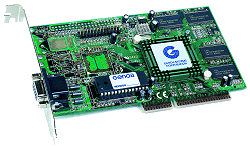 Phantom 740
Phantom 740
![]()
![]()
![]()
![]()
Launched: 1998
Bus: AGP 2x
Chipset: Intel 740
Memory: 8 MB SDRAM
Memory Clock:
100 MHz
RAMDAC Clock: 203 MHz
"The Phantom 740™ 3D/2D graphics accelerator card optimizes the speed and performance of a Pentium™ II processor-based computer with advanced AGP 2X acceleration. Powered by the breakthrough Intel740™ graphics accelerator, the Phantom 740™ outperforms AGP 1X and PCI graphics boards (up to 3 times faster) and provides advanced graphic features that deliver the eye-popping 3D performance and outstanding 2D speed that business users require and gamers demand. The Phantom 740™ includes 8MB of 100MHz SDRAM and supports resolutions as high as 1600 x 1200. This makes the Phantom 740™ an outstanding price/performance value and the perfect choice for today's demanding PC users."
Genoa Electronics Corporation, June 1998
Advanced 3D Features
- Z-Buffering for Texture Mapping
- Flat and Gouraud Shading
- MIP Mapping
- Bilinear Texture Filtering
- Edge Anti-aliasing
- Specular Lighting
- Backface Culling
- Stippling or "Screen Door" Transparency
- Complete set of blending functions (alpha blending, fog)
- Windows 95, 98, NT 4.0, NT 5.0 drivers
- Exceeds Microsoft Entertainment PC'97/Intel Graphics Controller '97 requirements
- FREE Software ( Including "RedlineRacer" Demo by Criterion Studios )
- Genoa Installation CD-ROM
- Pentium II based system with one free AGP slot
- Windows 95 (OSR VERSION 2.0 or Higher)
Windows NT 4.0 (With service pack 3 or higher) - CD ROM Drive
- 16MB of memory
- Intel740 Graphics Processor
- High-speed 64 bit 2D,3D graphics and video
- 203 MHz RAMDAC
- 8 MB 100 MHz SDRAM
- High screen resolution of up to 1600x1200
- Flicker free refresh rates up to 85Hz
- Acceleration for 8/16/24-bit pixels
- 2X AGP 133MHz full operation
- VESA DDC-2B monitor compliant
Graphics Modes Supported
| Resolution | 16/256 colors | 65,000 colors | 16.8 Million colors |
|---|---|---|---|
| 640x480 | Yes | Yes | Yes |
| 720x480 | Yes | Yes | Yes |
| 720x576 | Yes | Yes | Yes |
| 800x600 | Yes | Yes | Yes |
| 1024x768 | Yes | Yes | Yes |
| 1280x1024 | Yes | Yes | |
| 1600x1200 | Yes |
NOTE: actual display modes available to user will depend on the monitor capability. Specifications subject to change without notice
More Images
Motherboards
|
Sound Cards
|
|
|
|
|
|
.png)
.png)
.png)
.png)
.png)
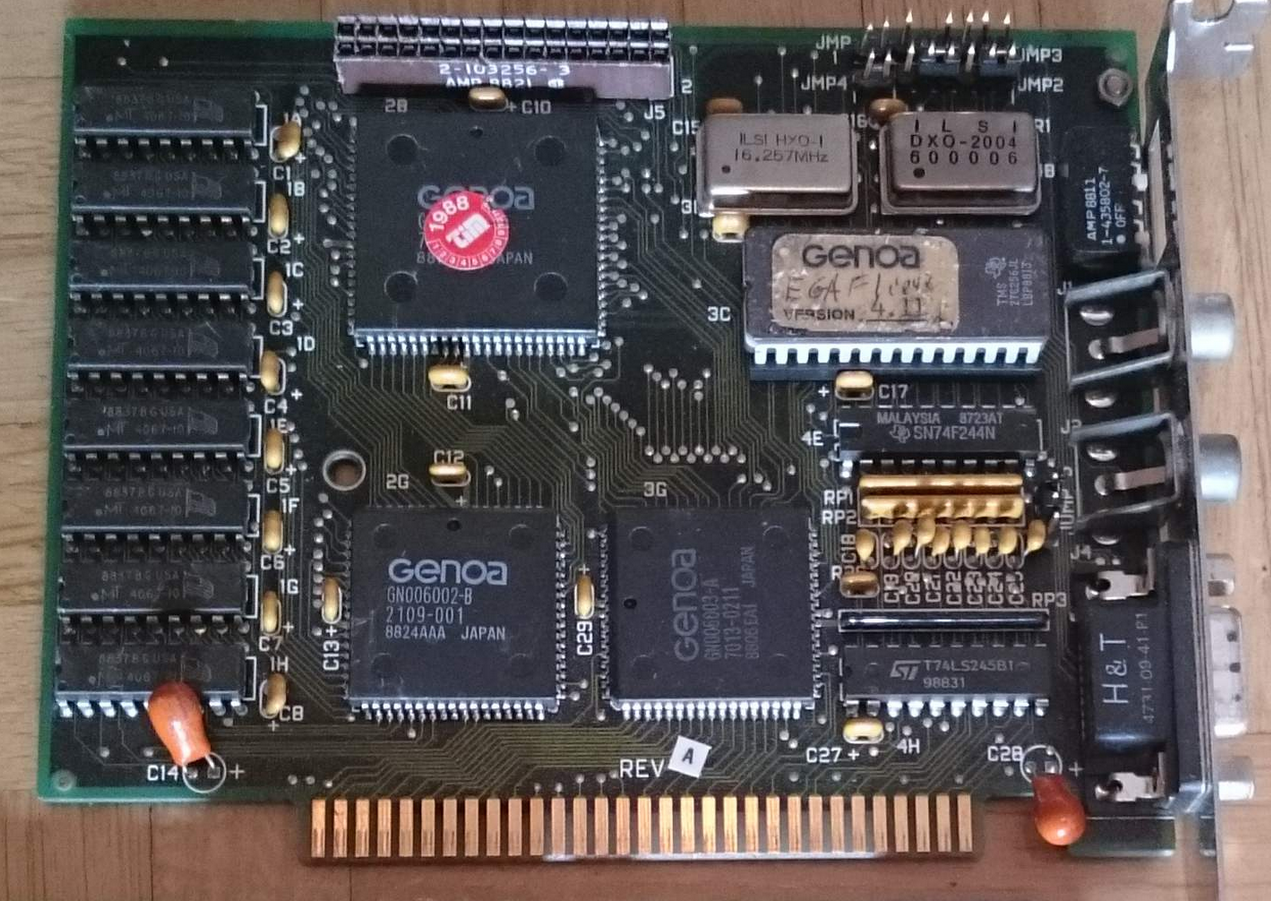
.jpg)
.jpg)
.jpg)
.jpg)
.jpg)
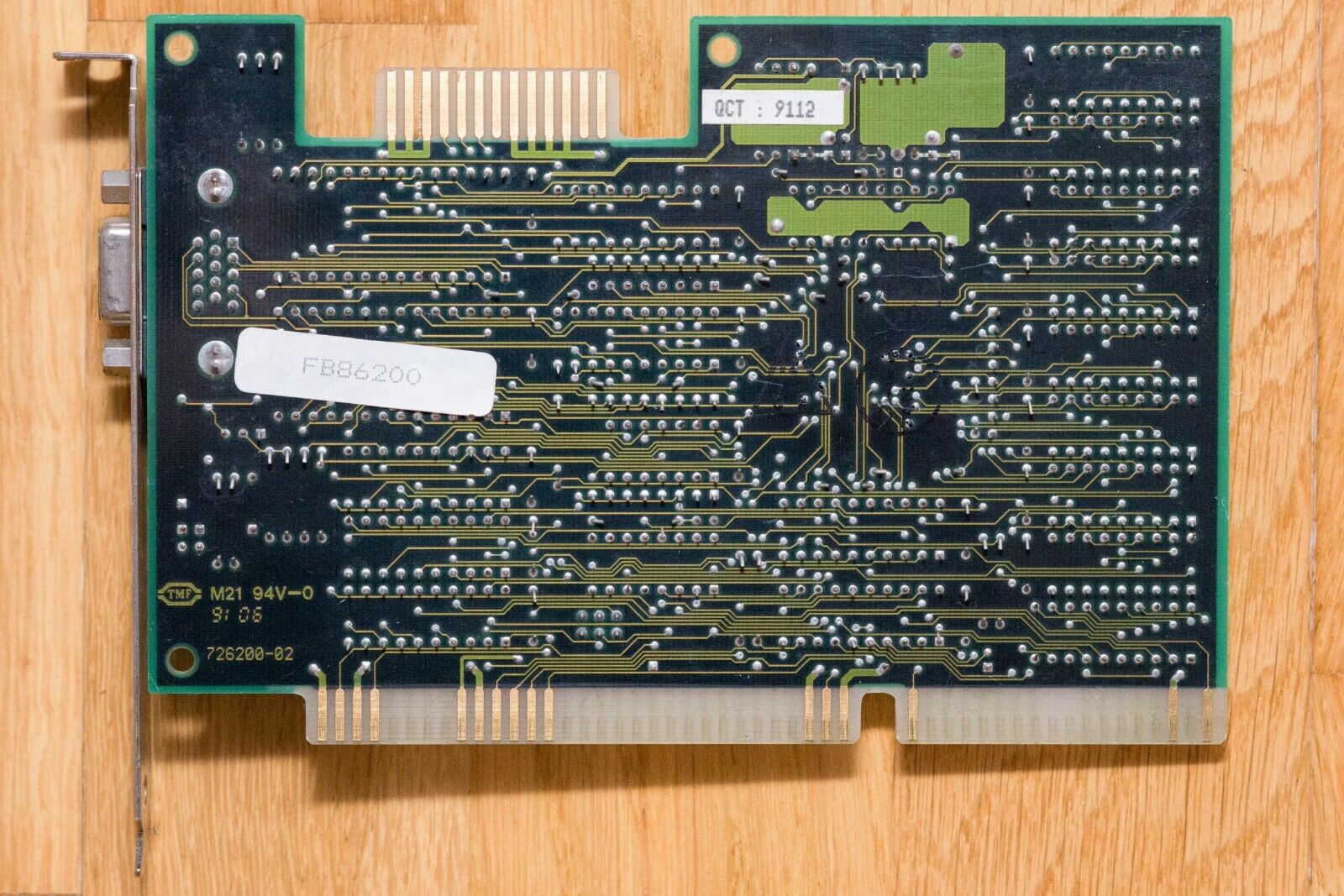
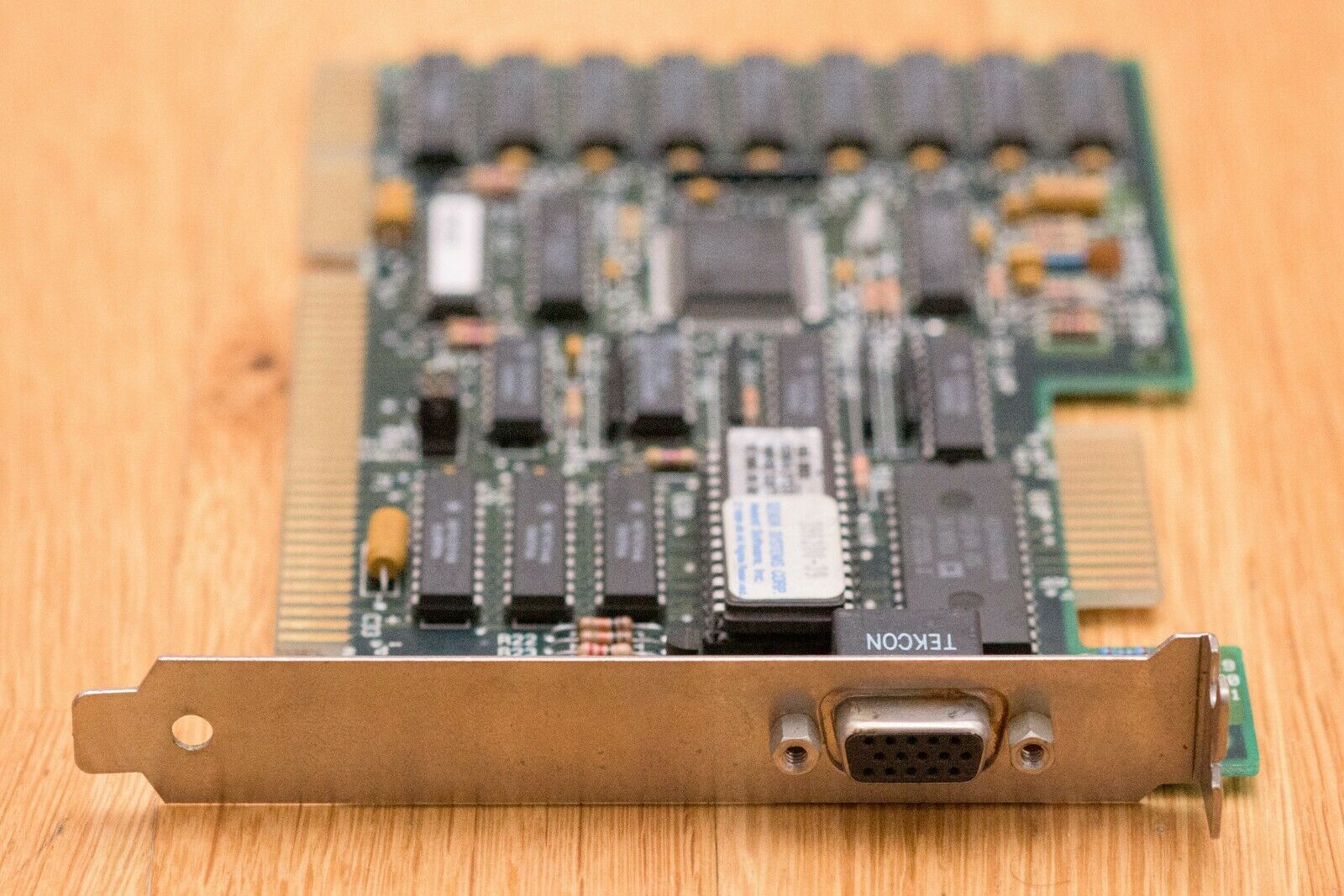
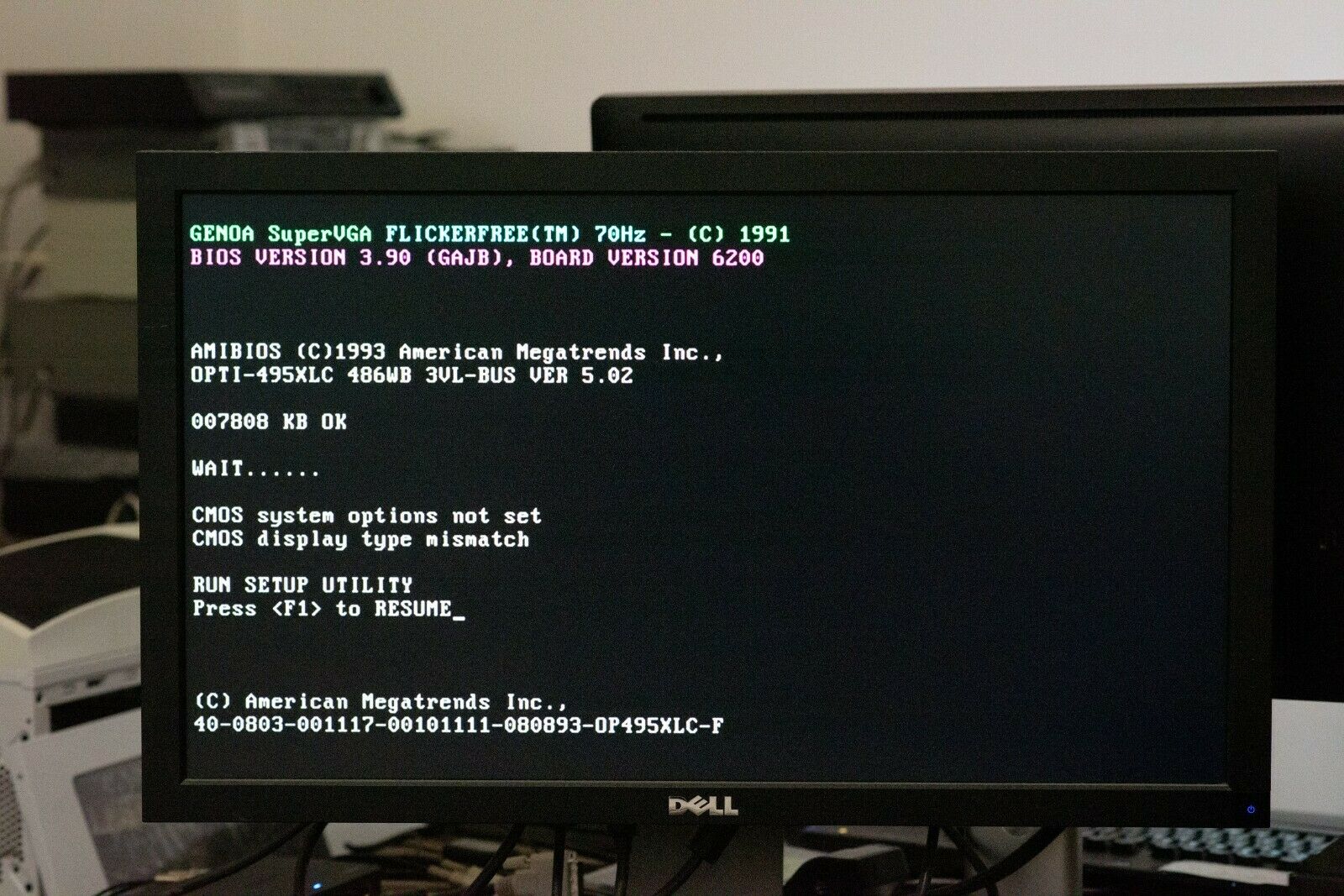
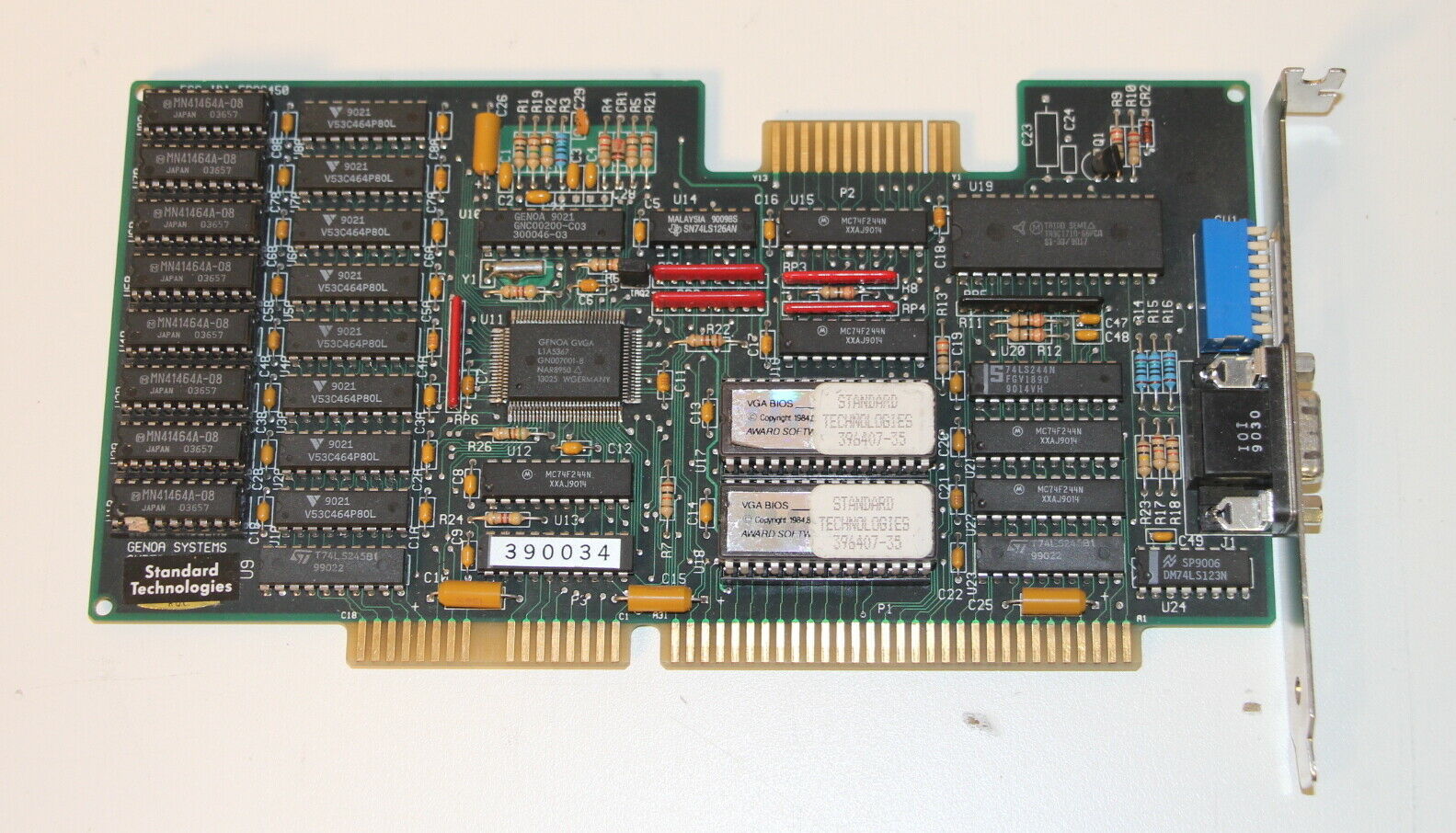
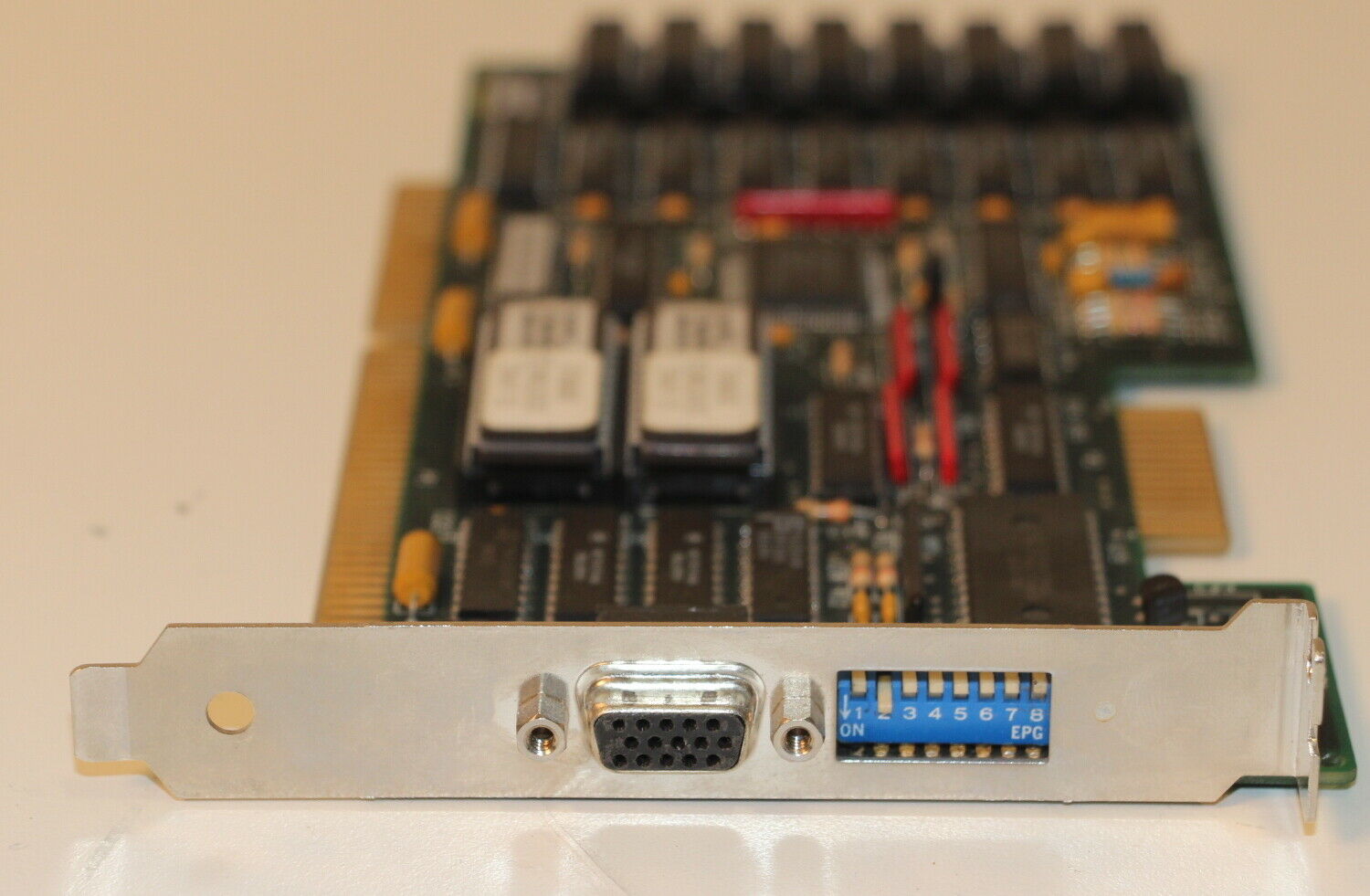
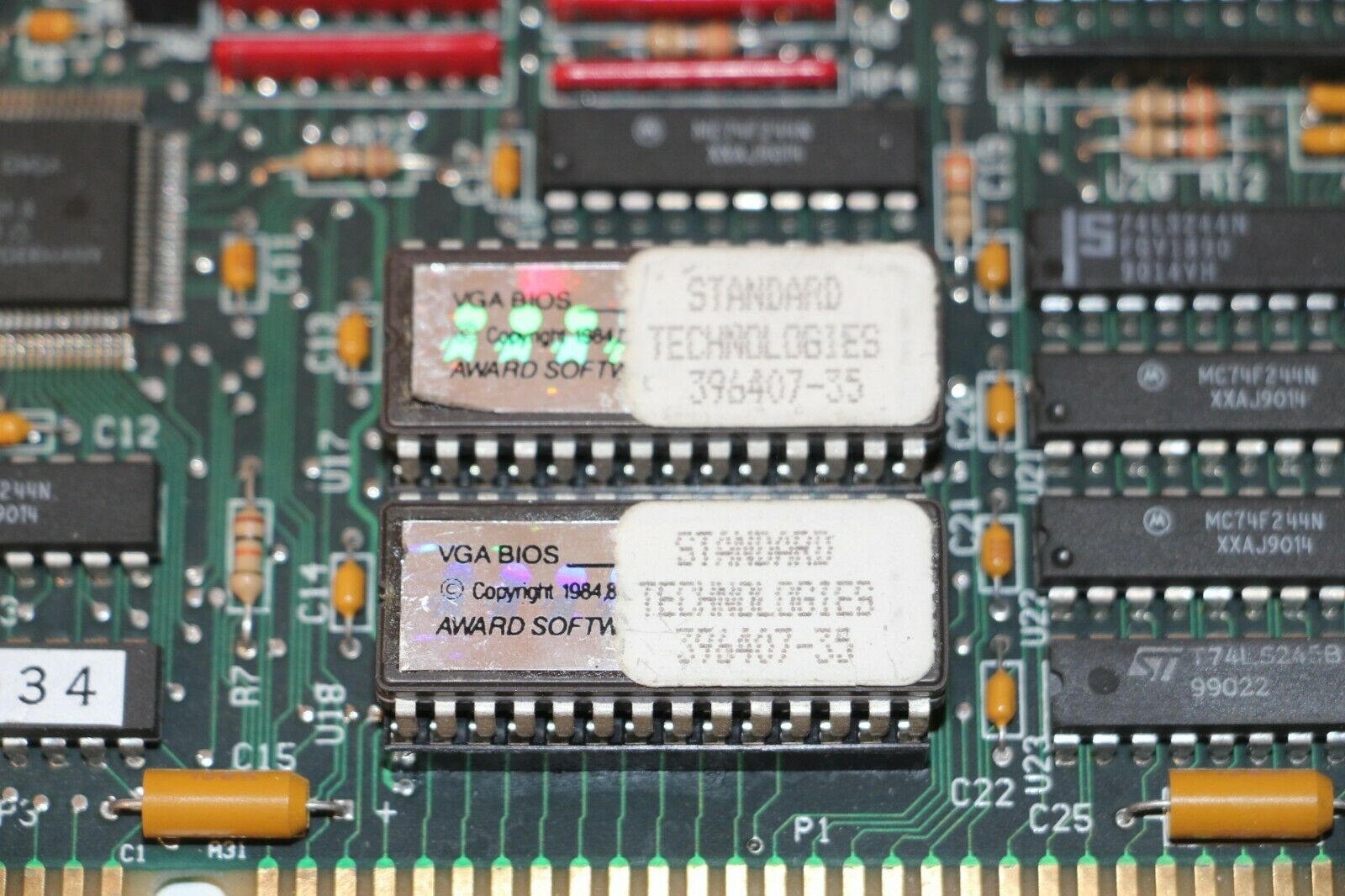
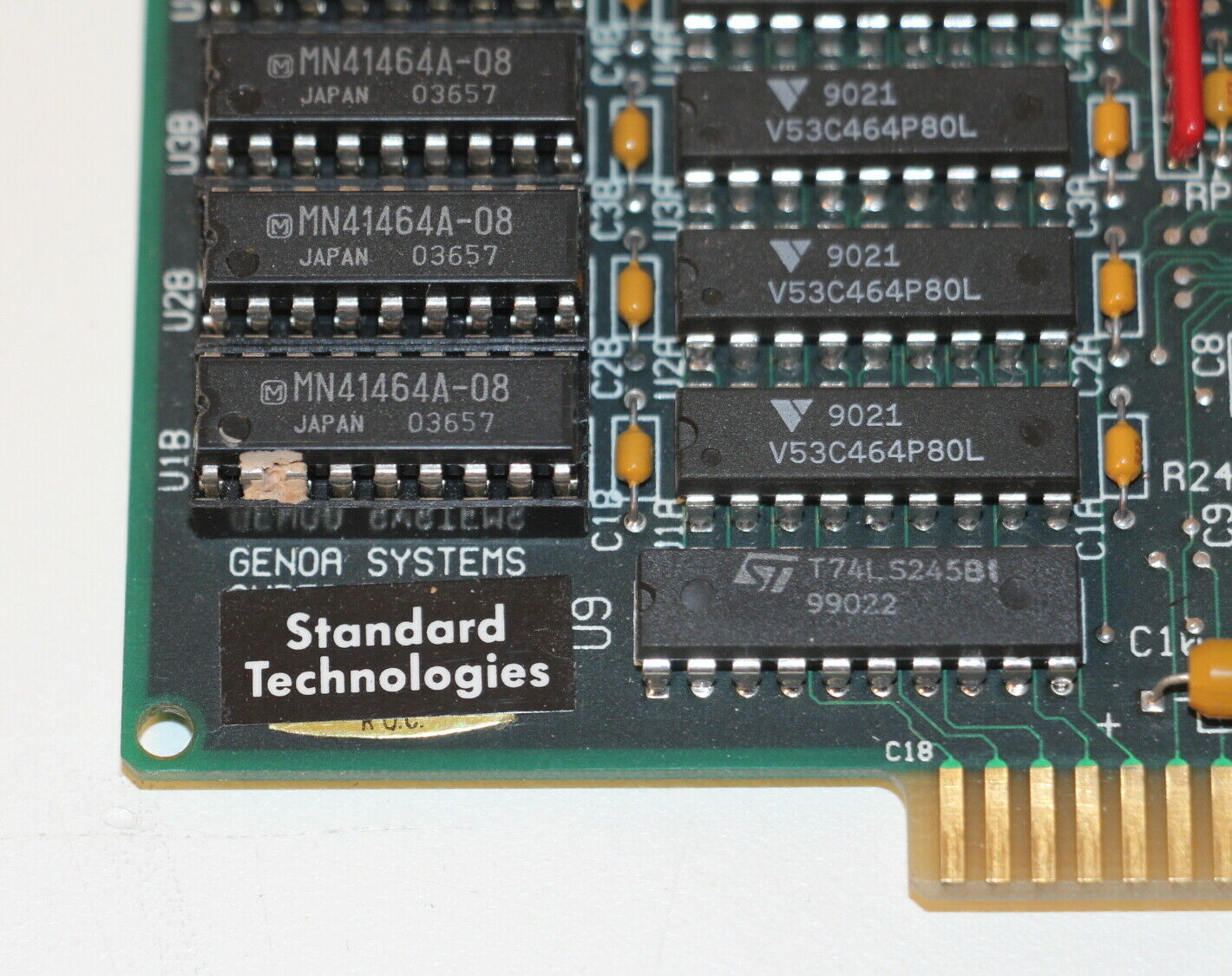
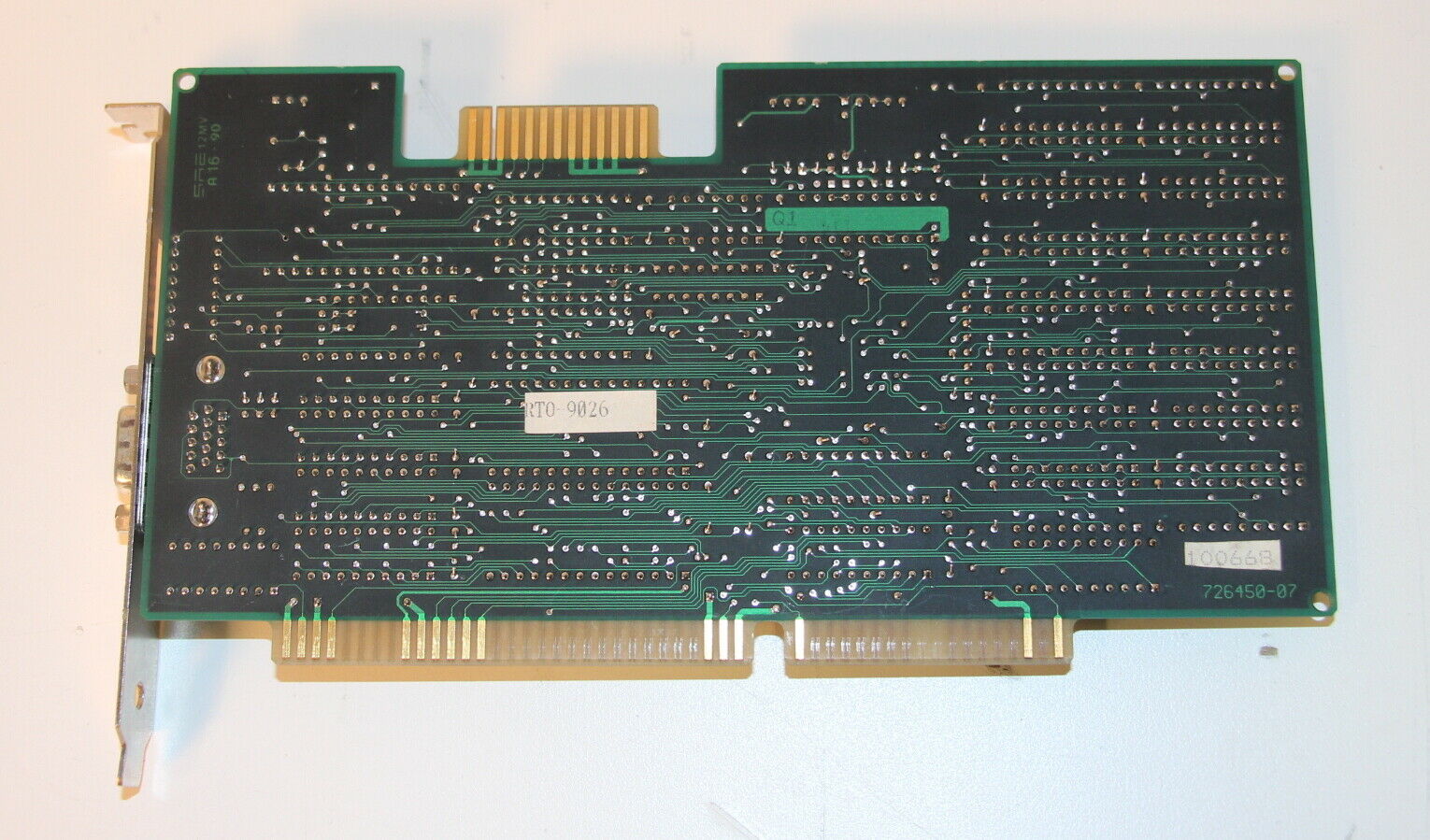
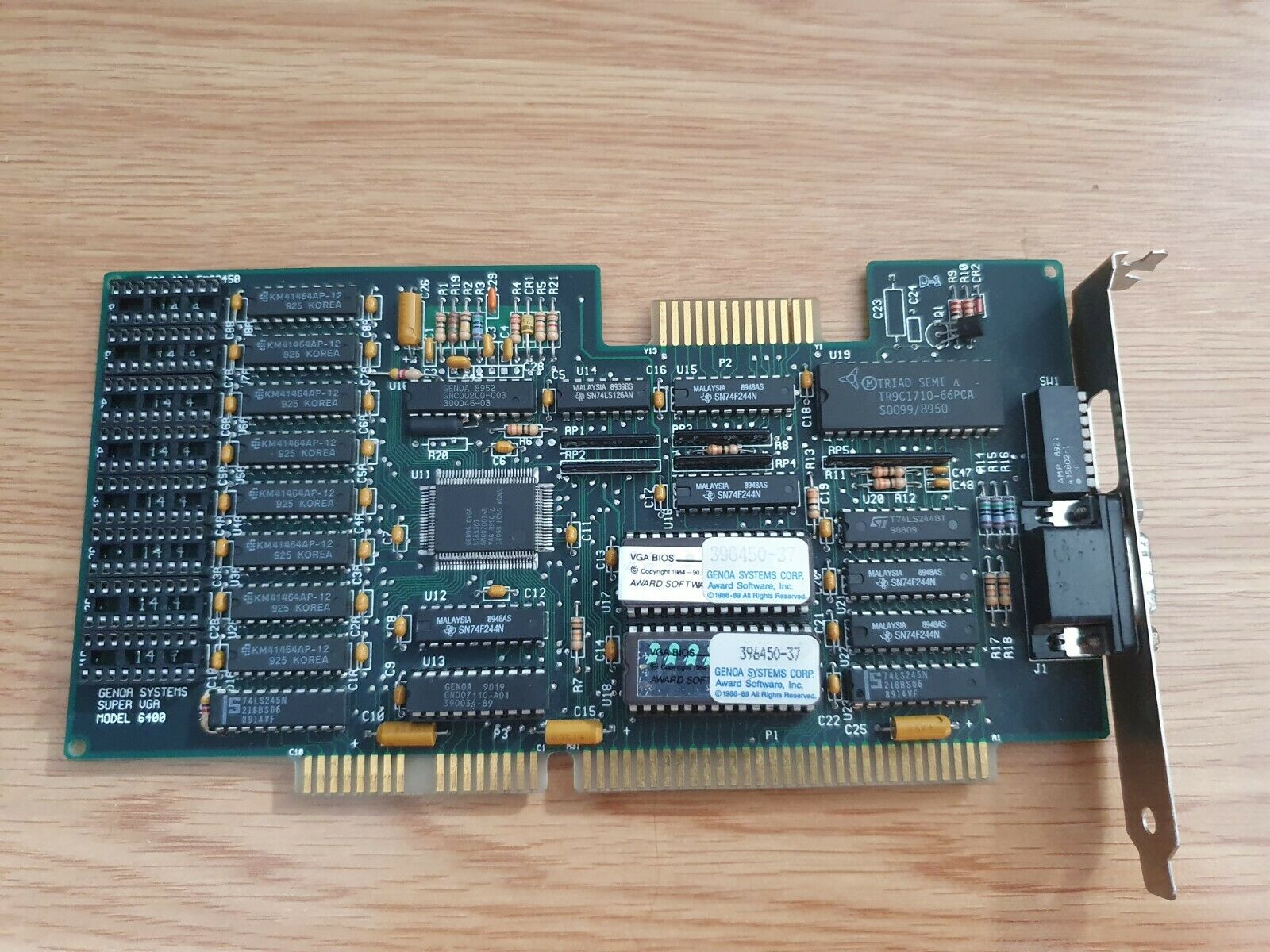
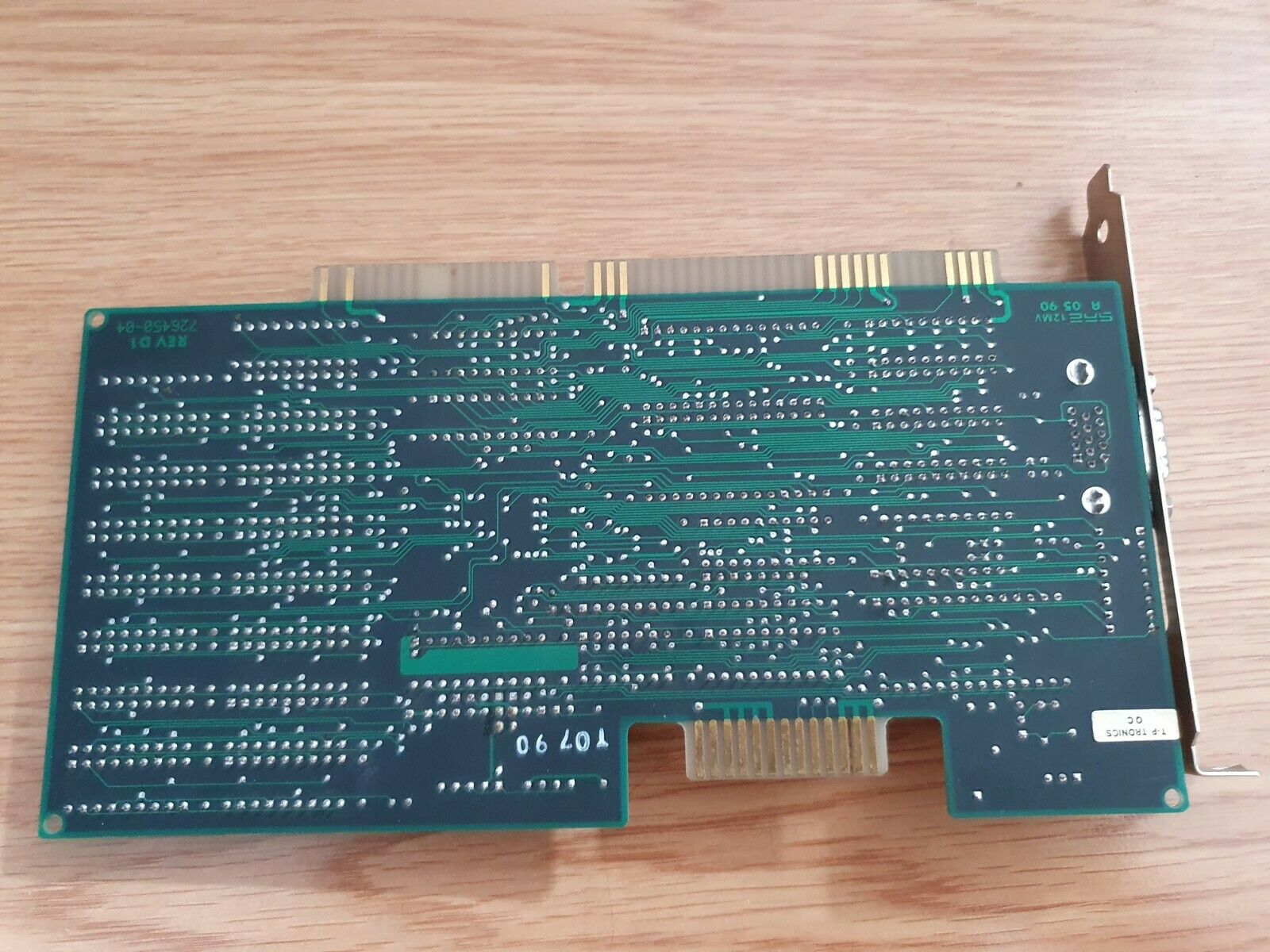
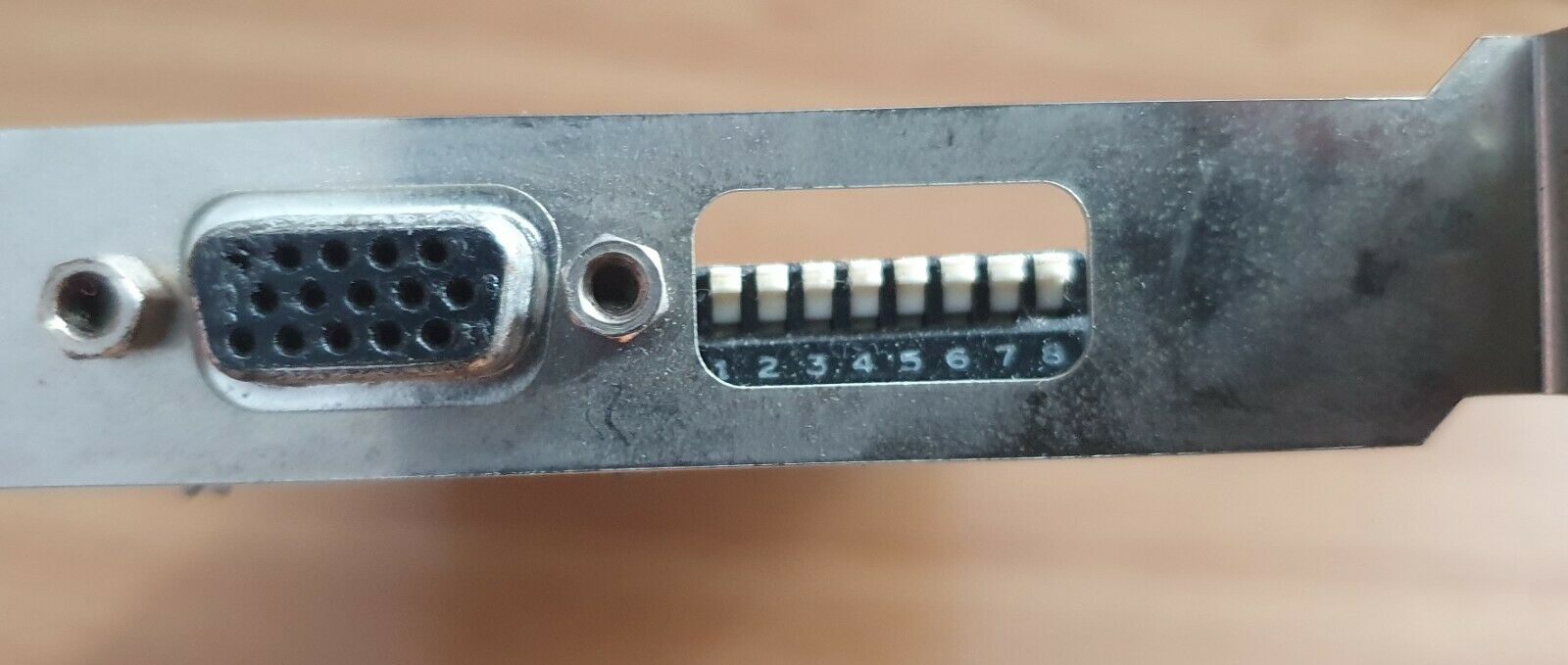
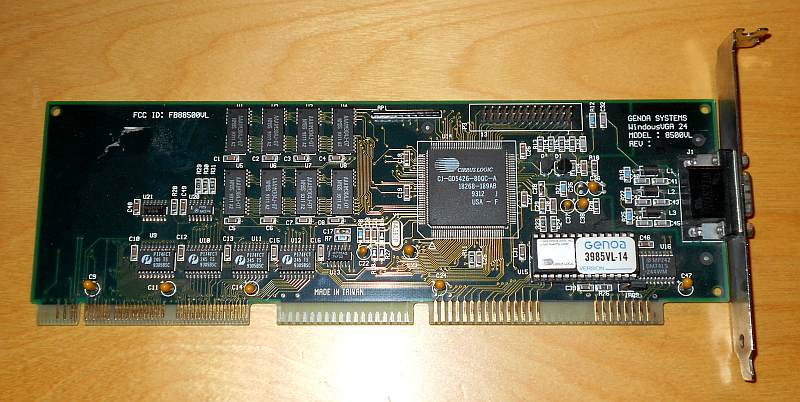
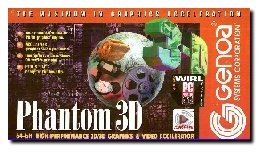
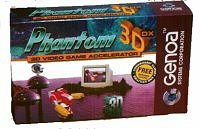
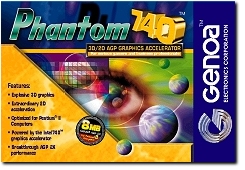
.jpg)
